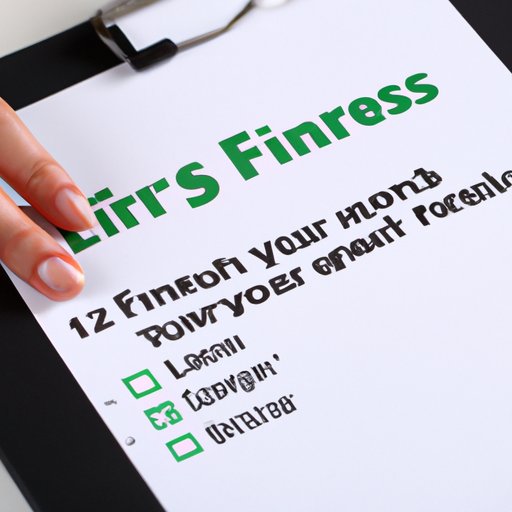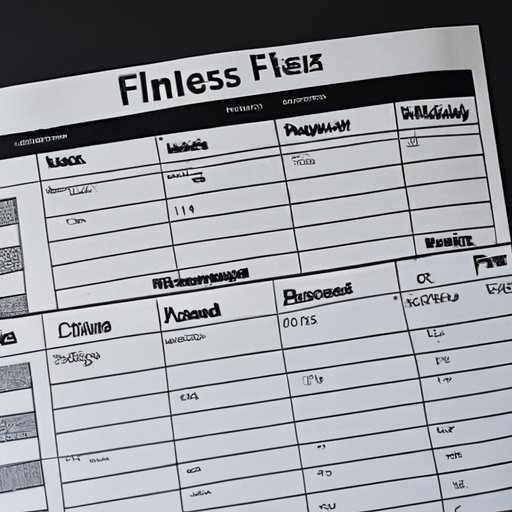Creating a Perfect Fitness Plan: 7 Steps to Success
Having a well-designed fitness plan is essential for anyone looking to improve their physical well-being. A personalized fitness plan not only helps you set clear goals but also ensures that you stay motivated and committed to achieving them. In this article, we will explore the seven steps to creating a perfect fitness plan that will set you up for success.
Step 1: Setting Clear Goals
The first step in creating a perfect fitness plan is setting clear and specific goals. Goal setting plays a crucial role in fitness planning as it provides direction and purpose to your efforts. When setting goals, it is important to make them SMART – Specific, Measurable, Achievable, Relevant, and Time-bound.
For example, instead of setting a vague goal like “I want to get fit,” a SMART goal would be “I want to lose 10 pounds in the next three months by going to the gym four times a week and following a healthy diet.” Setting specific and measurable goals allows you to track your progress and stay motivated along the way.
To find inspiration for your fitness goals, consider what you truly want to achieve. Do you want to improve your cardiovascular endurance, build strength and muscle, or increase flexibility? Tailor your goals to your individual desires and aspirations.

Step 2: Assessing Your Current Fitness Level
Before diving into any fitness plan, it is crucial to assess your current fitness level. Understanding your starting point will help you set realistic goals and create a plan that is suitable for your individual capabilities.
There are various methods for assessing physical fitness, including strength tests, flexibility tests, and cardiovascular endurance tests. You can perform these tests at home or seek the help of a fitness professional to get a more accurate assessment.
Make sure to track and record your baseline measurements so that you can measure your progress over time. Take note of details such as weight, body measurements, and fitness test results. This helps you see the improvements you make along your fitness journey.
Step 3: Identifying Activities You Enjoy
Finding exercise activities that you enjoy is key to staying consistent and motivated in your fitness journey. Engaging in activities that you find fun and enjoyable makes it easier to incorporate exercise into your daily routine.
Consider different types of exercises such as cardio workouts, strength training, and flexibility exercises. If running on a treadmill doesn’t excite you, try activities like dancing, swimming, or hiking. The goal is to find something that keeps you engaged and excited to workout.
Don’t be afraid to explore different fitness activities and discover your preferences. Join group exercise classes, try out new workout routines, or experiment with home workout videos. The more you experiment, the higher the chances of finding activities that you genuinely enjoy.
Step 4: Planning Your Workout Schedule
Creating a realistic and manageable workout schedule is essential for long-term success. When planning your workout schedule, consider factors such as time availability, work/life balance, and personal preferences.
Figure out the best time of day for you to exercise. Some people prefer morning workouts to kickstart their day, while others find evening workouts a great way to de-stress and unwind. Experiment with different times until you find what works best for you.
It is important to be consistent with your workout routine. Start by committing to a few days a week and gradually increase the frequency as you build momentum. Remember that consistency is key when it comes to achieving your fitness goals.
Step 5: Selecting the Right Fitness Resources and Tools
Fitness resources and tools play a significant role in supporting your fitness plan. Whether you prefer the guidance of a personal trainer, the convenience of fitness apps, or the support of online communities, choosing the right resources that align with your goals and preferences is crucial.
Consider hiring a personal trainer if you need individualized guidance and motivation. A personal trainer can create a tailored workout plan and provide expert advice to help you reach your goals effectively.
If you enjoy utilizing technology, there are numerous fitness apps available that provide a wealth of workout routines, tracking tools, and motivational features. These apps can help you stay on track and monitor your progress effortlessly.
Joining online fitness communities is also a great way to stay accountable and find support from like-minded individuals. These communities often provide valuable resources, inspiration, and encouragement to keep you motivated along your fitness journey.
Step 6: Creating a Balanced Workout Plan
A well-rounded workout plan is crucial to optimize your fitness results and prevent plateauing. Incorporating various types of exercises into your routine helps you target different muscle groups, improve overall fitness, and maintain a healthy balance.
Include elements of cardiovascular exercise, strength training, and flexibility training in your fitness plan. Cardio workouts like jogging, cycling, or using the elliptical machine help improve cardiovascular health and burn calories. Strength training exercises, such as weightlifting or bodyweight exercises, build muscle and increase strength.
Don’t forget to prioritize flexibility exercises like yoga or stretching to improve joint mobility and prevent injuries. Aim for a balanced combination of these exercises to create an effective and sustainable workout plan.
Additionally, be mindful of avoiding overtraining and allowing your body time to rest and recover. Rest days are just as important as workout days as they allow your muscles to repair and grow stronger. Listen to your body and adjust your workout intensity or frequency accordingly.
Step 7: Tracking Progress and Making Adjustments
Tracking your progress is essential to ensure that your fitness plan is working effectively. Monitoring your progress helps you stay motivated and make necessary adjustments along the way.
Keep a fitness journal or use technology trackers to record your workouts, measurements, and achievements. This data allows you to look back and see how far you’ve come, serving as a reminder of your progress and fueling your motivation.
Regularly assess your progress and make adjustments to your fitness plan as needed. If you’re not seeing the desired results, consider tweaking your workouts or increasing the intensity. If you’re progressing well, challenge yourself by setting new goals or trying more advanced exercises.
Conclusion
Creating a perfect fitness plan requires time, effort, and commitment, but the benefits are undoubtedly worth it. By following the seven steps outlined in this article, you can create a well-designed fitness plan that aligns with your goals and preferences.
Remember that everyone’s fitness journey is unique, so be patient and kind to yourself. Celebrate every small achievement along the way and stay motivated by focusing on the progress you’re making.
Take action today and start building your personalized fitness plan. It’s time to prioritize your health and well-being and embark on a journey towards a fitter and happier you.
(Note: Is this article not meeting your expectations? Do you have knowledge or insights to share? Unlock new opportunities and expand your reach by joining our authors team. Click Registration to join us and share your expertise with our readers.)
